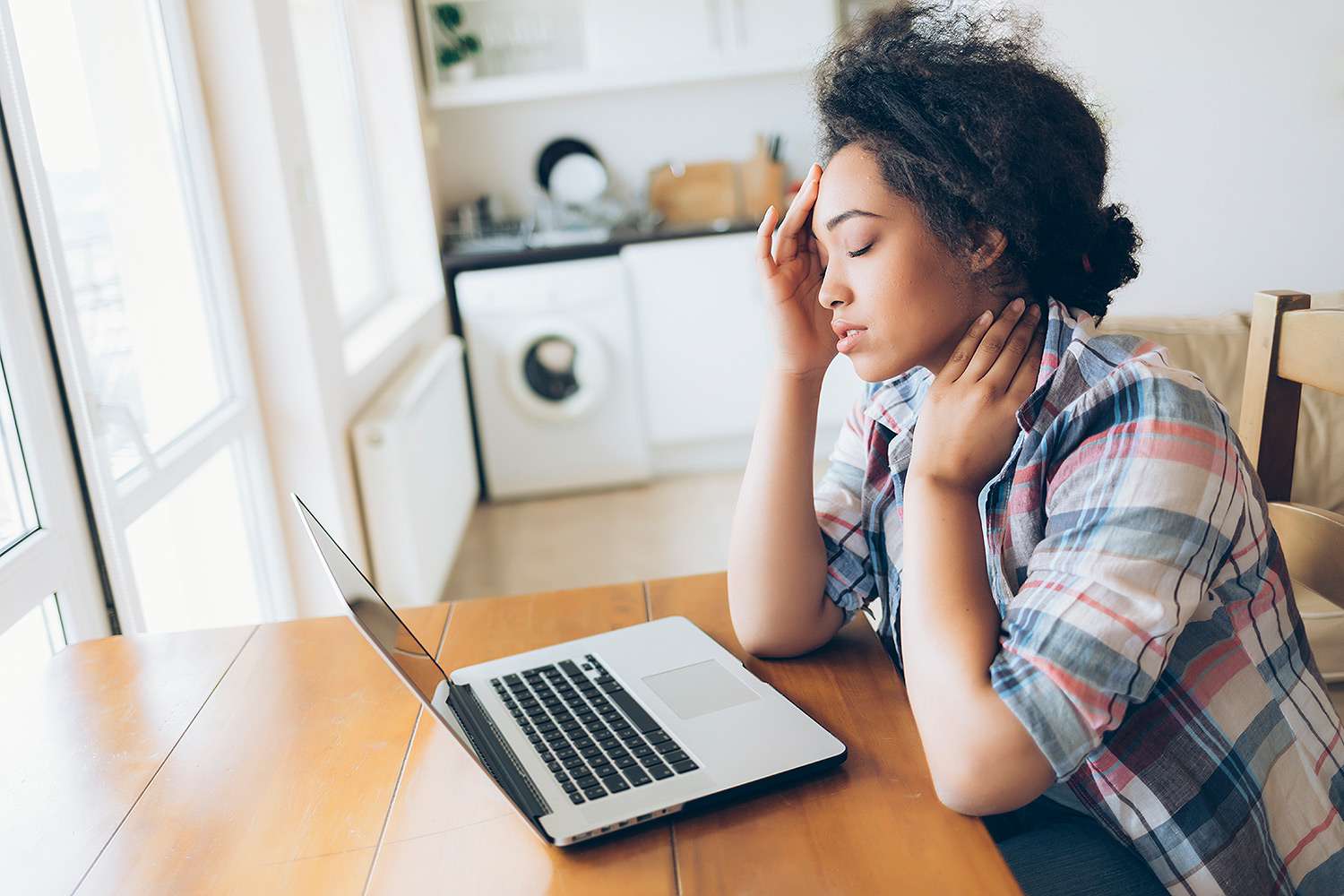
It won’t surprise anyone to hear that headaches are way up in 2020. Among those who suffer migraines, 64.1 percent reported an increase in migraine episodes, with 22.7 percent of those reporting the jump as significant, according to survey results published in September in The Journal of Headache and Pain.
There are a number of possible reasons for the increase: Not only is migraine a symptom of COVID-19 itself (though only 4 percent of the respondents have had the virus, to their knowledge), but the stress around all things pandemic-related is certainly thought to be a trigger.
Adding to that fact is the difficulty of treatment during lockdown: 61.5 percent of those surveyed did not communicate with their neurologists during this time , 25.1 percent have a harder time than usual getting their medications, and of those who receive Botox injections as treatment, 66.1 percent had negative impacts of having to cancel their appointments.
But that doesn’t mean the coming months have to be filled with headaches (of both the literal and figurative types). By avoiding triggers, managing anxiety, using online tools, and smart strategies for better work setups, you can help ensure more migraine-free days. Here, three experts in the field share tips for avoiding this common (but debilitating) neurological condition.
Filter Blue Light
Experts know certain kinds of light can be a headache trigger for migraine sufferers—and right now blue light is in the spotlight. Explains Dr. Jennifer McVige, a neurologist and director of the Concussion Center at the Dent Neurologic Institute, light sensitivity has been a major challenge in the era of COVID-19 thanks to all the increased screen time.
For most people, due to work-from-home orders, our increased time indoors, and our sudden reliance on Zoom for a social life, “people are obviously online more,” Dr. McVige says. There are some steps you can take to help you mitigate the eye strain. The first: “Turn down your backlight or brightness on your phone or computer. It will help with the glare and save on your battery as well,” she suggests.
And while many are on the fence about whether there’s enough evidence to conclude blue light-blocking glasses can make a difference, Dr. McVige points out that many patients report relief from them, which could be reason enough to give them a go. (Three brands we like: Zenni, Lensabl and Peepers.)

Load Up Your Phone
When it comes to migraines, the saying holds true: there really is an app for that. Tech types have answered the headache community’s call for on-the-go support with a few little smart helpers. Dr. McVige’s picks: Migraine Buddy and Health Log, which help with tracking headaches and identifying triggers to avoid (like alcohol and food sensitivities), and Headspace and Calm for managing stress.
Sit Up Tall
One thing you can do right now to potentially help thwart a migraine episode, according to Dr. Stephen Silberstein, MD, director of the Jefferson Headache Center at Thomas Jefferson University: Correct your posture, as “pain and discomfort in the upper back and neck can trigger migraine.” He suggests switching out your uncomfortable chair for an ergonomic one, like Gabrylly Ergonomic Mesh Office Chair (Buy It! $290, amazon.com). Or you could try a wearable electronic trainer like Upright GO Original Posture Trainer and Corrector for Back (Buy It! $80, uprightgo.com), which could give you the nudge you need to sit straight.
Go Fragrance Free
Dr. Parham Yashar, MD, the stroke medical director at Dignity Health Northridge Hospital, recommends skipping perfumes and fragrances. As he explains it, “olfactory chemical irritants may stimulate pathways that are involved in headaches” – so zero in on unscented options for laundry detergents, cleaning supplies and so on. Dr. Yashar also suggests considering adding an indoor air filter at home to filter out other unwanted odors.
Destress Daily
Stress is the most common cited trigger for headaches—in a study in Cephalalgia, 80 percent credited it as a contributor to their head pain. Prioritizing soothing activities over stressful ones may offer some relief. “You can use mindfulness and meditation or going outside for fresh air, take 10 minutes to exercise or stretch, or just give yourself a break and unplug,” says Dr. McVige. Try scheduling in something that provides a sense of “ahhhh…” into your day whenever you can.

Prioritize Sleep
Setting yourself up for a proper rest can help keep you functioning at your best. “The key switches to make in your bedroom are to try to minimize the various triggers that patients with migraines may have in the first place,” says Dr. Yashar. That means eliminating the light of devices at night, blocking out as much noise as possible, and do all you can to get in at eight hours of ZZZs.
Consider Your Workspace
You’ve upgraded your chair and gotten some blue light-blocking glasses, but there are a few other tweaks you can make in your workspace, says Dr. Yashar: “Keep the office or room well-lit, but without very bright lights like fluorescent lights, if possible.” Minimizing surrounding environmental or neighborhood noises is also a good goal, he says, and suggests moving your home office as far back in your home as possible to prioritize quiet.
Have a Plan for Bad Days
“It is hard to always avoid migraine triggers, especially when it comes to weather,” says Dr. McVige. “Pressure changes like rainy days are hard.” On those days when you know you may experience a migraine trigger – stress, lack of sleep, hormonal changes like menstruation – be extra on top of hydrating, de-stressing and eating right, and possibly block some time on your calendar to sneak 15 minutes of shut-eye.
Source: Read Full Article